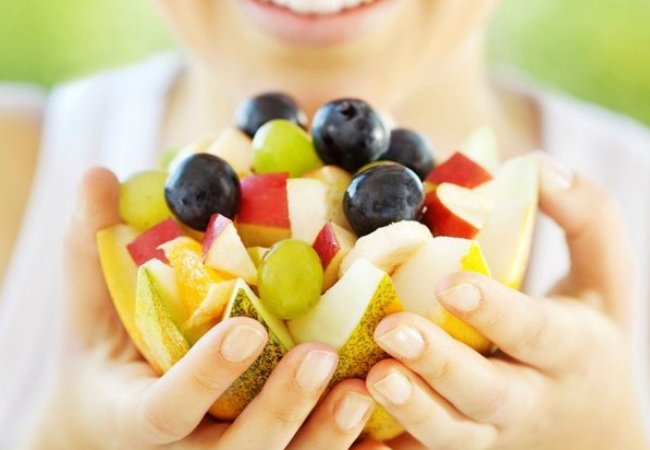
In the body’s pecking order, hair is a non-essential organ. If your diet is lacking, nutrients are diverted to higher-priority organs, and hair misses out. The result is hair that’s dry and slow to grow.
Beating this is simple – just make sure you eat a well-balanced diet rich in fruit and vegetables, with at least two servings of protein a day and large amounts of energy-giving wholegrain carbohydrates. This will ensure optimum nutrition for the entire body and your hair will get its fair share. It’ll then grow at its maximum speed (normally around 14mm a month), strength and thickness.
As with skin, what you eat affects your hair. Hair follicles rely on nourishment from the bloodstream , but they compete with the rest of your body for nutrients.
You can also help prevent particular hair problems with diet. This doesn’t mean that a good breakfast will beat a bad hair day – hair takes three months to grow, so that’s how long it will take to see the results of any dietary changes. Nor can you eat your way out of a bad hairdo. No amount of vitamins will repair hair that’s chemically damaged or split. But you can help some other things.
Oily hair
While naturally oily hair is genetically determined, if your hair has suddenly turned oily, check your spice intake. Foods that cause the skin to sweat like curries or chilli also cause the scalp to sweat and this increases oil levels.
Dull hair
Lack of shine in your hair means that it’s not reflecting the light properly. Healthy hair is formed with a flat cuticle, and when light rays hit this they bounce back. That’s what creates the shine. However, if the cuticle on the hair lifts, that reflection won’t happen and hair will look dull. So why does the cuticle lift? While chemical processes like bleaching are the most common cause, lack of protein also causes the hair to grow with a lifted cuticle. It is recommended that you eat 0.75g of protein (like lean meat, poultry, fish dairy products, nuts, seeds or pulses) per kilogram of body weight a day.
Dry hair
This is one of the common symptoms of essential fatty acid deficiency. This is particularly true if your hair is flyaway and frizzy. Boost EFAs by eating nuts, seeds and oily fish like mackerel. These foods also supply protein, which is vital for glossy hair; without it, the hair forms with a lifted cuticle which reduces the hair’s natural protection, making it easier for, moisture to evaporate and drying to occur.
Hair that won’t grow
The B vitamins, which provide the body with energy, are vital for hair growth. If your energy levels are low, hair growth slows down. Eating little and often will help to keep energy levels up. Biotin (sometimes called vitamin H) also helps create thicker, faster-growing hair. You’ll find it in eggs, fish, milk, nuts and pulses.
Thinning hair
This tends to be linked to iron deficiency. Ensure you’re reaching around 14.8mg of iron a day from a supplement or by filling your diet with lean red meat or dark green vegetables. Also, too much vitamin A (over 10,000 units a day) can lead to hair loss. This is only likely to happen if you are taking in high levels of A-heavy foods or if you’re mixing supplements. If you are, stop. Vitamin A is toxic to the body and hair loss is the first sign of this. If you want extra vitamin A for your skin, increase your intake of fruit and vegetables.
Useful Tips for Better Hair Diet
|
The bottom line is all the bodily activities get fuel from diet. Common hormonal imbalances, nutrition deficiencies and less blood condition can be addressed through proper diet.
Hence to maintain self-esteem and increase confidence on your hair, you should first take care of balanced, wholesome and staple diets. External treatment for hair growth is secondary.
